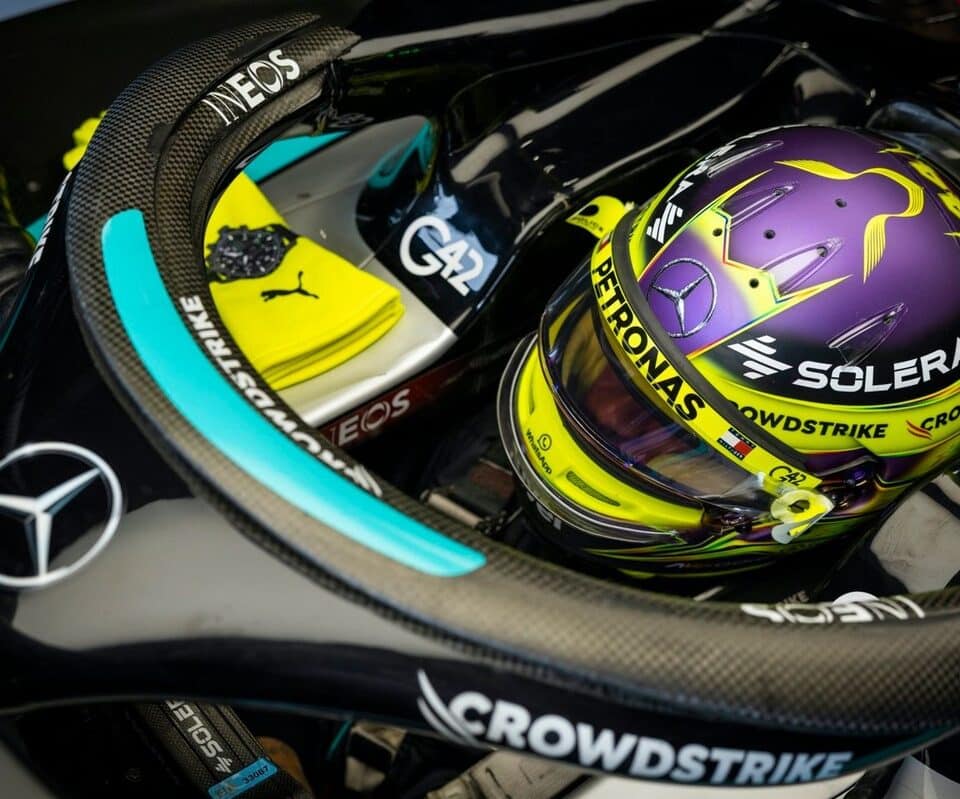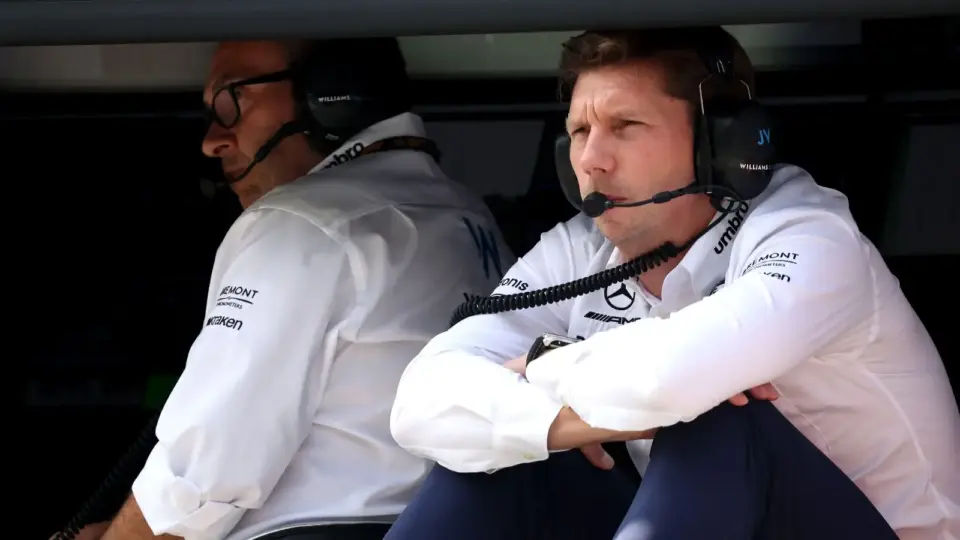Seven-time world champion Lewis Hamilton has expressed his reservations about the FIA’s plan to introduce air conditioning units in Formula 1 cars. Hamilton believes that the implementation of such systems is unnecessary for well-trained F1 drivers.
This statement comes in light of the FIA’s announcement to trial simplified air conditioning units in response to the extreme heat challenges faced during last season’s Qatar race. The first test will take place at the upcoming Dutch GP, with further experiments planned for subsequent races.
Hamilton’s Stance on Aircon Units
Lewis Hamilton has been vocal about his opposition to the FIA’s proposed air conditioning system for Formula 1 car cockpits. According to Hamilton, rigorous training should suffice to help drivers cope with extreme heat. “We’re highly-paid athletes. And you’ve got to train your arse off to make sure you can withstand the heat, ultimately,” he stated.
In a recent press conference, Hamilton, who had a handheld fan with him following his third-place finish in Budapest, emphasized that the physical demands of F1 are part of what makes the sport challenging and rewarding. He also noted that extreme conditions are not new to Formula 1.
The FIA’s Response to Heat Challenges
The FIA developed the air conditioning system after several drivers experienced physical difficulties during last season’s Qatar race, where temperatures never dipped below 31°C. The race saw drivers like Logan Sargeant withdraw with heatstroke, Esteban Ocon vomit in his helmet, and Lance Stroll briefly lose consciousness.
In light of these incidents, the FIA has committed to exploring solutions to prevent such occurrences in future races. The initial trial will take place at the Dutch GP, where one car will be fitted with the new system during practice sessions. Further tests are planned for other races to gather comprehensive data.
Drivers’ Experiences and Reactions
The extreme heat at the Qatar race posed significant challenges, with multiple drivers suffering from its effects over the race’s 57 laps.
Williams’ Logan Sargeant had to withdraw due to heatstroke, demonstrating the severity of the conditions. Similarly, Alpine’s Esteban Ocon vomited inside his helmet, and Aston Martin’s Lance Stroll briefly passed out. These incidents prompted the FIA to take action and consider innovative solutions to enhance driver safety.
Features of the Proposed Aircon System
The proposed air conditioning system by the FIA is designed to be a simplified version that can be easily integrated into existing F1 car cockpits. The aim is to provide relief without significantly altering the car’s dynamics.
Motorsport.com has reported that if the system proves successful, the FIA will make design details available for companies to produce their own versions. Teams would then be required to install these units based on predefined temperature thresholds, which are yet to be determined.
Hamilton’s Perspective on Driver Training
Hamilton argues that Formula 1 drivers are elite athletes who undergo extensive training to prepare for the physical demands of the sport. He believes that this rigorous preparation is sufficient to deal with extreme conditions without the need for additional artificial cooling aids.
He highlighted that the demanding nature of races in places like Qatar and Singapore is part of what makes Formula 1 unique and challenging. Hamilton’s stance underscores his belief in the athletic prowess of F1 drivers and their ability to adapt to adverse conditions.
Implications for Future Races
If the air conditioning system is implemented, it could mark a significant change in how F1 cars are equipped for extreme weather conditions. This move may lead to a broader discussion on the balance between driver safety and maintaining the traditional challenges of the sport.
The success or failure of the upcoming trials will likely influence the decision-making process regarding the adoption of these systems in future races. Teams and drivers will be closely monitoring the outcomes to understand the potential benefits and drawbacks.
Broader Context and Industry Reactions
The proposal has sparked a variety of reactions within the motorsport community. Some support the initiative as a necessary step towards improving driver safety, while others echo Hamilton’s concerns about maintaining the sport’s traditional physical challenges.
As the trials progress, it will be crucial to consider input from various stakeholders, including drivers, teams, and technical experts, to ensure that any implemented changes serve the best interests of the sport.
Conclusion
Lewis Hamilton’s opposition to the proposed air conditioning units in F1 cars brings to light a critical debate on driver safety versus the demanding nature of the sport.
As the FIA prepares to trial the new system, the forthcoming results will be pivotal in shaping the future of Formula 1’s approach to extreme weather conditions.
While Lewis Hamilton remains skeptical about the necessity of air conditioning units in F1 cars, the FIA’s commitment to exploring solutions underscores the importance of driver safety.
The motorsport community will be closely watching the outcomes of these trials, which will play a crucial role in determining whether these systems become a standard feature in the future.










